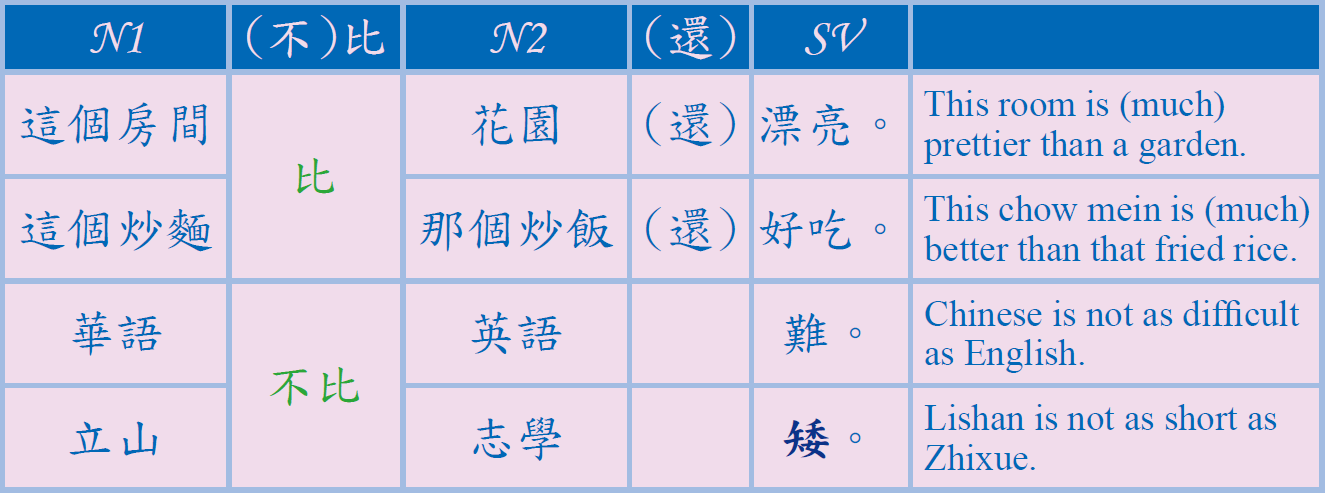2022年6月13日晚上22点00分
1. 比: to compare; compared to; than
When you want to have a positive or negative comparison between the difference of two or more persons or affairs, then the sentence pattern “N1 (不)比 N2 SV” can be used. If the compared sentence is a positive one, an adverb 還(hái) can add before the SV in order to strengthen the degree of the difference.

The negative comparative pattern, “不比” can be replaced with “NP1 / VP1沒有 NP2 / VP2那麼 + SV” as in the following examples:

- 天氣
- 花蓮
- 百貨公司
- 夜市
- 划算
2. 比較: (contrastive) more
In contrast to “比”, “比較” is not a transitive verb, so it cannot be followed by a noun. The other person or thing compared is usually mentioned earlier.

In front of this pattern, you can also add “跟……比起來” to illustrate the thing being compared to. Example: “跟寫書法比起來,跳舞比較不容易”。